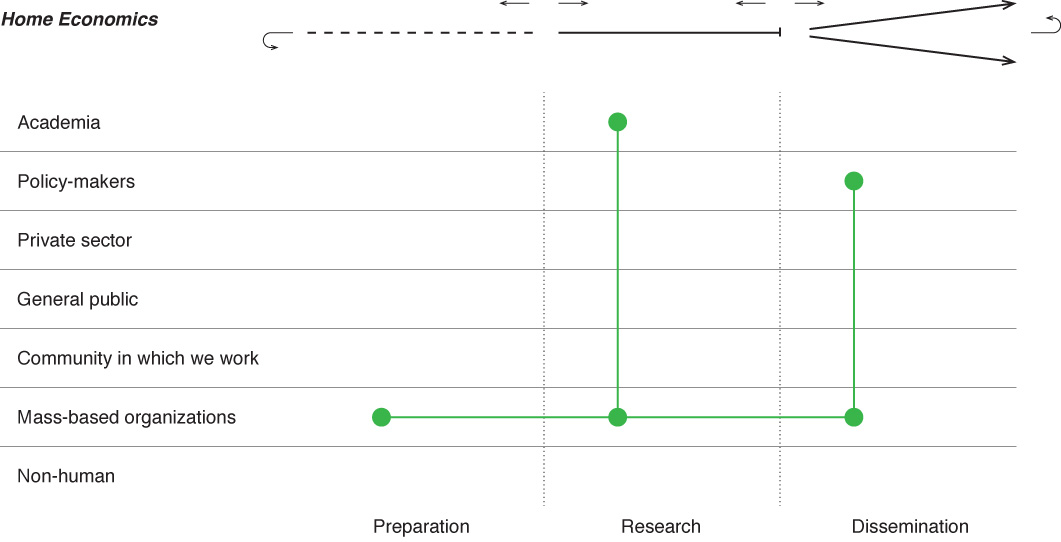Home Economics, USA
Participant at the IGJ: Nik Theodore (University of Illinois at Chicago)
“The National Domestic Workers Alliance (http://www.domesticworkers.org/homeeconomics/) is a national alliance of base-built organizations in cities across the United States. They contacted me, an academic, so this process starts with them. They initiated a research project with the ultimate goal of making it public. The goal was to shift public opinion and policy, with other goals interwoven within that. To initiate the process we assembled a team: four domestic workers; two domestic workers organizers; one organizer from the national alliance; two organizers from a couple of organizations; and three people affiliated to the university. The team designed a survey. This survey was translated by the domestic workers organizers into nine different languages, and then implemented by the domestic workers and domestic workers organizers–at homes, in parks, in NGOs, and so on. We completed 18,006 surveys in 40 cities across the country. Then it comes to the university where the data is entered. The information is put into summary tables and we have a meeting with 80 domestic workers. We put the information in big papers on the wall, and we did what we called “moving groups of analysis” on the findings. We did this in four languages. Domestic workers start to put up their analyses. Then two people went to write a report of this session. Linda Burnham (from the NDWA) and I go and write up the report.
At that point, the report gets shared, it gets translated, and then we try to project it; and this is where it gets public. Domestic workers are nationally excluded from a number of labour laws, so the NDWA tries to change this state by state. For this, you need to have policy-makers to start to think about this as a problem. They try to change the way domestic workers’ employers think about domestic work: domestic workers are not family members, but they have an employment relationship with the family. Then, within their own kind of organizations, the NDWA had multiple goals: domestic workers were doing the survey amongst themselves in order also to recruit within those base organizations. The challenge then was how to get the report out. In the US, the way for something to influence policy-makers is that it has to appear in the newspaper. It has to be discussed, it has to appear on television, so that was one of our publics. To get this into the New York Times, to get them to write an editorial. The other way was to get it into the communities, to get it into community newspapers. To get it on Telemundo, the Spanish-speaking TV channel in the US. I didn’t write about this for academic audience. We have gotten emails from Morocco, Russia, and other parts of the world from organizations that are trying to replicate this study.”
Figure 14 explains the engagement with publics for the Home Economics project. This was predominantly for the public group of mass-based organisations, throughout all the stages of research, as this was also the initiating group. However academics were involved in the research phase, with policy-makers in the dissemination.
